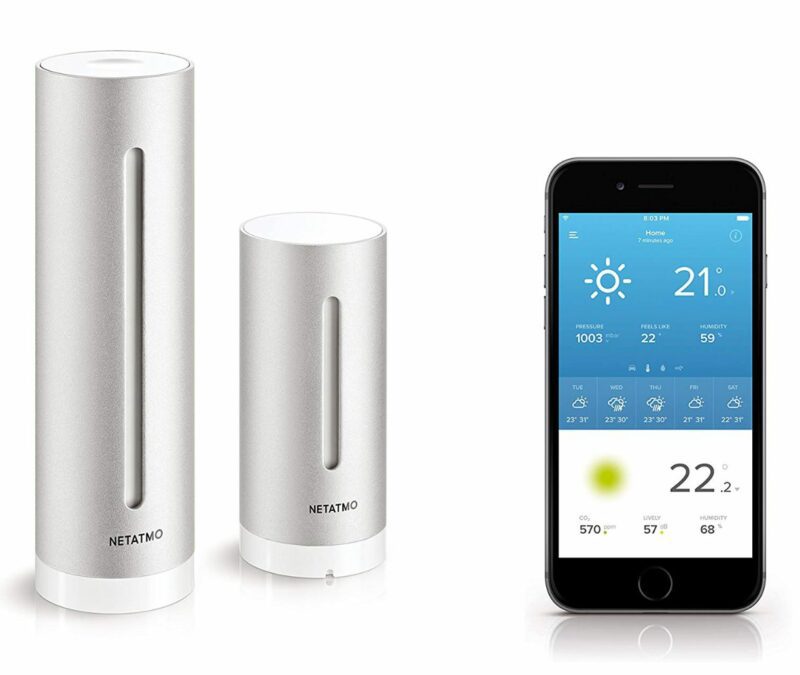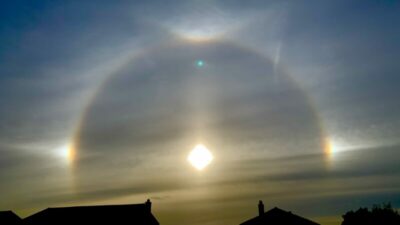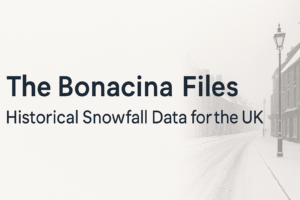Sponsor Any Post or Page on the Site. Just Contact Me to Discuss.
Weather station in Gilesgate, Durham City
This is a real weather website from a Durham resident, rather than an aggregator. I also have a strong connection with the Durham University weather station, which reports directly to the Met Office.
Durham Weather Forecast and Current Weather
The weather forecast for tomorrow and the next 7 days in Durham is available here (click the big blue ‘Live Durham Weather’ button). You can also see current and historical weather from the site.
The Durham Climate – What its normally like
The weather in Durham is different to Ferryhill where I used to live (see below). Gardens are typically more sheltered, having hedges and plants rather than yards and concrete and outside netties (toilets).
Temperatures can be modified a bit, but it’s more gusty in windy weather as there are more buildings to disrupt the direct wind flow.
Have a look at the Durham Climate page detailing the typical climate of Durham and the North East and what to expect here.
What Weather Station do I use in Durham?

At the moment, I’m using the rather smart NetAtmo Weather Station.
Everything is connected using wireless. I record temperature and rainfall, but not wind speed and direction.
It’s a neat little system and not too expensive to own (under 150 quid). The sensors are battery operated and the AAA batteries last for ages. It’s available at Amazon here.
Durham Weather Photos – Make things look nice

I’ll also show any weather themed photographs or videos sent by my kind readers. Please note I’d need dates and locations of any you send if you could.
I’ll give you a full shout-out credit for any Durham weather photos I feature (your name in lights). Please contact me if you are interested.
Ferryhill Weather Website Archive
In addition to the Durham data i’m collecting now, I’ve also copied over the data from my old Ferryhill weather website.
I was at this location for 18 years and have records for Ferryhill from the end of 1999 up until 2011.
It’s got the legendary snowy winter of 2010 in amongst it, so worth keeping for posterity.
As I said earlier on the page, I have close ties with Durham University Observatory on Potters Bank in Durham. It is the official Met Office one after all, so better keep in sync. The old monthly summaries are over on the Ferryhill Archive page.
Bonacina/O’Hara UK Snowfall History
This is a continuation of the UK Snowfall History catalog developed by an old Italian guy called Leo Bonacina. It shows UK snowfall by year and I add to it (because little old Leo is long dead) with information from other sources.
This brought it more or less up to date (the original only covered 1875-1975, a bit before my time). Each winter has been classified as ‘Little’, ‘Average’, ‘Snowy’ or ‘Very Snowy.
They are colour coded, depending on the amount of snow and how generally it fell. I try to add to it each winter.
It doesn’t just show Durham snow or north east snow. They are referenced in the UK snowfall statistics. I have continued the UK snowfall history series here. It has been extended to the present day. I try to summarise each winter snowfall in the same ‘Leo Bonacina way’.
See the UK snowfall statistics on the Bonacina/O’Hara UK Snowfall History page.


Would it be possible to get .CSV (or other file format) for the “Today’s Weather and Durham Weather Forecast”, more specifically “Barometric Pressure – Indoors” ?
I have an environmental sensor (Bosch BME280) and would like to calibrate/compare data to that in a similar location (I am central Durham).
Kind regards.
Hi
I am not sure how my search brought me to your site. I read your front page and I have a Netatmo weather station as well. I’ve often wondered if it was possible to extract the data from it and on reading your review you mention an app called Smartmixin. I had a look and downloaded it. I had not heard of it before and was amazed that it allowed me to access all my Weather records back to 2014 when I set the station up. Thanks very much for the pointer and I now have all my data in a spreadsheet. The only problem I’ve had with the station is that it goes off-line now and again. It seems to do it over a period of a few days and then it stops and is up for many weeks at a time. I’ve not been able to find out what triggers it. I did speak to Netatmo about it and they suggested dedicating a port for it but I have not been able to find the menu in my Talktalk router to do that. It is a Huwaei
Hi Simon,
Good to hear from another NetAtmo user. The station never usually causes any bother and like you say it can run for long periods and then experiences a glitch. I put it down to broadband problems and sometimes it downloads firmware updates which may cause a problem when it tries to install them.
SmartMixin (strange name) is really just a query tool that accesses the data on the NetAtmo servers, where the data is stored. Why NetAtmo don’t make their own client better, I don’t know, but I produce all of my monthly reports from SmatMixin and can’t fault it really.
Where exactly are you from?
Dave
The far south. Well not quite far south as you can get a lower latitude and still be in the UK. Bexhill is the answer. It is rain that has been my interest this year or the lack of it. One of my favourite weather prediction apps is WeatherProHD. Many times this year I have seen an odd phenomena. I see a prediction of rain but when the time comes Bexhill seems to just miss it. It is almost as if there is ray machine that pushes the rain away at the last moment. I have had no rain this month, 13.6mm in July, 19.1mm for June and only 2.7mm for May. All very low. My poor garden is very dry. It would be great to have data for nearby towns such as Eastbourne, Hasting and Battle. I do not know if that data is available or not.
Eastbourne
Hastings
Battle : No station
Ok Bruce, let me know how that goes.
Dave
I find your site very interesting and wonder if you could help me.
I am looking for historic weather details (mostly about rain) relating to the Castle Eden/ Peterlee area.
Do you know of any person or group that has recorded data for this area over the past few years?
I woud bre grateful for any help or guidance about this matter.
Thank you in anticipation
Bruce Adams
Hi Bruce, good to hear from you.
I frequent a weather forum at the Netweather.tv website. https://www.netweather.tv/forum/ There’s a member from Peterlee there who maybe able to help you. His name is Dominic Wade (Dommy). You’ll need to join the forum to message him that way, but he’s also on Facebook, so you can find him that way too. https://facebook.com/dominicwade
Hope this helps,
Dave
Thanks very much Dave. I will contact Dominic to see if he can help.
This is great Ang will be super exited by this,she is Durham born and Bred and strangely enough a bit of a weather geek too
Hi Rory/Ang, always great to connect with local people! As you’ll see from the website, i’ve been a bit of a weather ‘freak’ since the mid-70’s and it’s my passion. Looking forward to talking in the future as we’re often in Claypath Deli.
Dave.
Very impressive site Dave and love all your photos. Hope you had a nice walk. Say hi to Deb
Regards Rob
Thanks Rob, it was a really good walk out. The weather was superb and the colours were absolutely gorgeous. We did about six and a half miles altogether and only stopped for one cup of americano and a sandwich. Some of the cloudscapes were immense, especially earlier in the day. We should do it more often as a lot of the woodland is just across the road from us. Durham is a fantastic place to live.
Dave